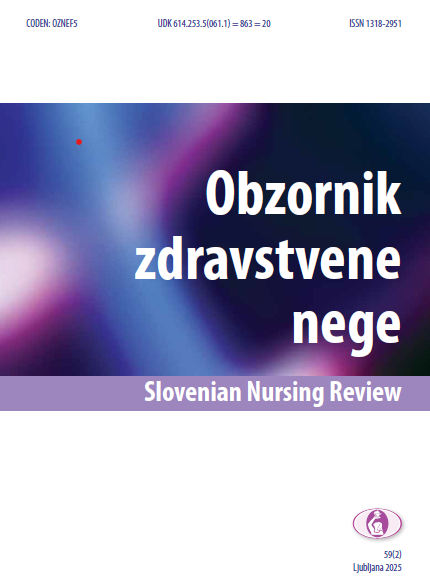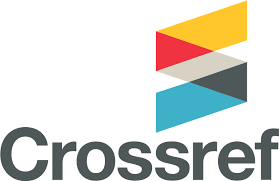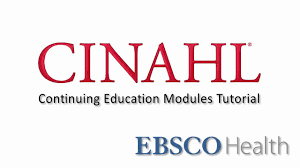Self-harm behaviour in adolescents as a consequence of family violence
A literature review
DOI:
https://doi.org/10.14528/snr.2025.59.2.3263Keywords:
self-harm, teenagers, domestic violenceAbstract
Introduction: Self-harm is a behaviour that adolescents resort to when they do not know how to react to emotional distress. Family violence is often an important trigger for self-harm behaviour in teenagers who are faced with intense distress, fear, helplessness and loss of trust. The aim of this study was to explore the association between domestic violence and self-harm in teenagers.
Methods: We searched the CINAHL, Cochrane Library, ScienceDirect and Google Scholar databases using the keywords "self-harm, family violence and adolescent" and their synonyms. We included English-language studies published between 2012 and 2023. Of the 304 hits identified, 16 studies were selected for review. We used the PRISMA (Preferred Reporting Items for Systematic Reviews and Meta-Analyses) diagram to guide the review process. The data were processed using content analysis, which allowed us to review a substantial amount of text from different sources. The process began with open coding and continued with the creation of thematic sub-categories and categories.
Results: The results of the literature review yielded a key thematic category of 'Impact of domestic violence on self-harm behaviour in adolescents', which was explained by three thematic subcategories: 'Childhood abuse and witnessing domestic violence', 'Parental rejection', and 'Other uncategorised factors'. Self-harm was most prevalent in adolescents who had witnessed domestic violence, experienced parental divorce, and were living in poverty or neglect.
Discussion and conclusion: The results suggest that self-harm in adolescents is strongly associated with domestic violence. Teenagers often express their distress through self-harm behaviour.
Downloads
Metrics
References
Aelenei, C., Lewis, N. A., & Oyserman, D. (2017). No pain no gain: Social demographic correlates and identity consequences of interpreting experienced difficulty as importance. Contemporary Educational Psychology, 48, 43–55. https://doi.org/10.1016/j.cedpsych.2016.08.004
Armiento, J., Hamza, C. A., Stewart, S. L., & Leschied, A. (2016). Direct and indirect forms of childhood maltreatment and nonsuicidal self-injury among clinically-referred children and youth. Journal of Affective Disorders, 200, 212−217. https://doi.org/10.1016/j.jad.2016.04.041 PMid:27136420
Assarroudi, A., Heshmati Nabavi, F., Armat, M. R., Ebadi, A., & Vaismoradi, M. (2018). Directed qualitative content analysis: The description and elaboration of its underpinning methods and data analysis process. Journal of Research in Nursing, 23(1), 42–55. https://doi.org/10.1177/1744987117741667 PMid:34394406; PMCid:PMC7932246
Auerbach, R. P, Kim, J. C., Chango, J. M., Spiro, W. J., Cha, C., Gold, J., Esterman, M., & Nock, M. K. (2014). Adolescent nonsuicidal self-injury: Examining the role of child abuse, comorbidity and disinhibition. Psychiatry Research, 220(1/2), 579−584. https://doi.org/10.1016%2Fj.psychres.2014.07.027 PMid:25095754; PMCid:PMC4252370
Bozzini, A. B., Bauer, A., Maruyama, J., Simoes, R., & Matijasevich, A. (2021). Factors associated with risk behaviors in adolescence: A systematic review. Brazilian Journal of Psychiatry, 43(2), 210−221. https://doi.org/10.1590/1516-4446-2019-0835 PMid:32756805; PMCid:PMC8023154
Brown, R. C., & Plener, P. L. (2017). Non-suicidal self-injury in adolescence. Paediatrics and Child Health, 26(12), 554−558. https://doi.org/10.1007%2Fs11920-017-0767-9 PMid:28315191; PMCid:PMC5357256
Chakraborti, L., Arensman, E., & Leahy, D. (2021). The experience and meaning of repeated self-harm among patients presenting to Irish hospital emergency departments. Issues in Mental Health Nursing, 42(10), 942–950. https://doi.org/10.1080/01612840.2021.1913681 PMid:33978551
Cheek, S. M., Reiter-Lavery, T., & Goldston, D. B. (2020). Social rejection, popularity, peer victimization, and self-injurious thoughts and behaviors among adolescents: A systematic review and meta-analysis. Clinical Psychology Review, 82, Article 101936. https://doi.org/10.1016/j.cpr.2020.101936 PMid:33128964
Ching Wong, B. H., Cross, S., Zavaleta-Ramírez, P., Bauda, I., Hoffman, P., Ibeziako, P., Nussbaum, L., Berger, G. E., Hassanian-Moghaddam, H., Kapornai, K., Mehdi, T., Tolmac, J., Barret, E., Romaniuk, L., Davico, C., Moghraby, O. S., Ostrauskaite, G., Chakrabarti, S., Carruci, S., Sofi, G., … Ougrin, D. (2023). Self-harm in children and adolescents who presented at emergency units during the COVID-19 pandemic: An international retrospective cohort study. Journal of the American Academy of Child & Adolescent Psychiatry, 62(9), 998−1009. https://doi.org/10.1016/j.jaac.2022.11.016 PMid:36806728; PMCid:PMC9933093
Cilar Budler, L., Stričevič, J., Kegl, B., Pevec, M., & Klanjšek, P. (2021). Caring for children and adolescents victims of domestic violence: A qualitative study. Jiang, Y., Rem, Y., Zhu, J., & Jianing, Y., 2022. Gratitude and hope relate to adolescent nonsuicidal self-injury: Mediation through self-compassion and family and school experiences. Current Psychology, 41, 935–942. https://doi.org/10.1007/s12144-020-00624-4
Kaess, M., Parzer, P., Mattern, M., Plener, P. L., Bifulco, A., Resch, F., & Brunner, R. (2013). Adverse childhood experiences and their impact on frequency, severity and the individual function of nonsuicidal self-injury in youth. Psychiatry Research, 206(2/3), 265−272. https://doi.org/10.1016/j.psychres.2012.10.012 PMid:23159195
Kharsati, N., & Bhola, P., 2015. Patterns of non-suicidal self-injurious behaviours among college students in India. International Journal of Social Psychiatry, 61(1), 39–49. https://doi.org/10.1177/0020764014535755 PMid:24869850
Laurinaityte, I., Assini-Meytin, L. C., & Čuničina, K. (2022). Examining the associations between adverse childhood experiences, health risk behaviours and psychological wellbeing in a convenience sample of lithuanian university students. International Journal of Environment Research and Public Health, 19(6), Article 3253. https://doi.org/10.3390/ijerph19063253 PMid:35328940; PMCid:PMC8955272
Lünnemann, M. K. M., Luijk, M. P. C. M., Van der Horst, F. C. P., Jongerling, J., & Steketee, M. (2022). The impact of cessation or continuation of family violence on children. Children and Youth Services Review, 140, Article 106565. https://doi.org/10.1016/j.childyouth.2022.106565
Marcal, K. E. (2018). The impact of housing instability on child maltreatment: A causal investigation. Journal of Family Social Work, 21(4/5), 331–347. https://doi.org/10.1080/10522158.2018.1469563 PMid:30774282; PMCid:PMC6377199
Marici, M., Clipa, O., Runcan, R., & Pîrghie, L. (2023). Is rejection, parental abandonment or neglect a trigger for higher perceived shame and guilt in adolescents? Healthcare, 11(12), Article 1724. https://doi.org/10.3390/healthcare11121724 PMid:37372842; PMCid:PMC10298591
Melnyk, B. M., & Fineout-Overholt, E., 2019. Evidence-based practice in nursing & healthcare: A guide to best practice (4th ed.). Wolters Kluwer.
Nacionalni inštitut za javno zdravje. (2020). Samopoškodbeno vedenje. https://www.zadusevnozdravje.si/pomagam-drugemu/dodatne-vsebine/samoposkodbeno-vedenje/
O'Connor, R. C., Rasmussen, S., & Hawton, K. (2014). Adolescent self-harm: A school-based study in Northern Ireland. Journal of Affective Disorders, 159, 46−52. https://doi.org/10.1016/j.jad.2014.02.015 PMid:24679388
Page, M. J., McKenzie, J. E., Bossuyt, P. M., Boutron, I., Hoffmann, T. C., Mulrow, C. D., Shaamseer, L., Tetzlaff, J. M., Akl, E. A., Brennan, S. E., Chou, R., Glanville, J., Grimshaw, J. M., Hróbjartsson, A., Lalu, M. M., Li, T., Loder, E. W., Mayo- Wilson, E., McDonald, S., McGuinness, … Moher, D. (2021). The PRISMA 2020 statement: An updated guideline for reporting systematic reviews. BMJ, 372, Article n71. https://doi.org/10.1136/bmj.n71 PMid:33781993; PMCid:PMC8005925
Pang, L. H. G., & Thomas, S. J. (2019). Exposure to domestic violence during adolescence: Coping strategies and attachment styles as early moderators and their relationship to functioning during adulthood. Journal of Child & Adolescent Trauma, 13(2), 185–198. https://doi.org/10.1007/s40653-019-00279-9 PMid:32549930; PMCid:PMC7289929
Pluck, G., Anderson, M., Armstrong, S., Armstrong, M., & Nadkarni, A. (2013). Repeat self-harm among children and adolescents referred to a specialist service. Journal of Child & Adolescent Trauma, 6(1), 57−73. https://doi.org/10.1080/19361521.2013.743949
Polit, D. F., & Beck, C. T. (2021). Nursing research: Generating and assessing evidence for nursing practice (11th ed.) Wolters Kluwer Health, Lippincott Williams & Wilkins.
Quirk, S. W., Wier, D., Martin, S. M., & Christian, A. (2015). The influence of parental rejection on the development of maladaptive schemas, rumination, and motivations for selfinjury. Journal of Psychopathology and Behavioral Assessment, 37(2), 283–295. https://doi.org/10.1007/s10862-014-9453-y
Radez, J., Reardon, T., Creswell, C., Lawrence, P. J., Evdoka- Burton, G., & Waite, P. (2020). Why do children and adolescents (not) seek and access professional help for their mental health problems: A systematic review of quantitative and qualitative studies. European Child & Adolescent Psychiatry, 30(2), 183–211. https://doi.org/10.1007/s00787-019-01469-4 PMid:31965309; PMCid:PMC7932953
Rakovec-Felser, Z. (2014). Domestic violence and abuse in intimate relationship from public health perspective. Health Psychology Research, 2(3), Article 1821. https://doi.org/10.4081/hpr.2014.1821 PMid:26973948; PMCid:PMC4768593
Ross-Reed, D. E., Reno, J., Penaloza, L., Green, D., & FitzGerald, C. (2019). Family, school, and peer support are associated with rates of violence victimization and self-harm among gender minority and cisgender youth. Journal of Adolescent Health, 65(6), 776−783. https://doi.org/10.1016/j.jadohealth.2019.07.013 PMid:31564618
Serafini, G., Canepa, G., Adavastro, G., Nebbia, J., Belvederi Murri, M., Erbuto, D., Pocai, B., Fiorillo, A., Maurizio, P., Flouri, E., & Amore, M. (2017). The relationship between childhood maltreatment and non-suicidal self-injury: A systematic review. Frontiers in Psychiatry, 8, 1−11. https://doi.org/10.3389/fpsyt.2017.00149 PMid:28970807; PMCid:PMC5609590
Serafini, G., Muzio, C., Piccinini, G., Flouri, E., Ferrigno, G., Pompili, M., Girardi, P., & Amore, M. (2017). The relationship between childhood maltreatment and non-suicidal self-injury: A systematic review. European Child & Adolescent Psychiatry, 8, Article 149. https://doi.org/10.3389/fpsyt.2017.00149 PMid:28970807; PMCid:PMC5609590
Son, Y., Kim, S., & Lee, J. S., 2021. Self-injurious behavior in community youth. International Journal of Environmental Research and Public Health, 18(4), Article 1955. https://doi.org/10.3390/ijerph18041955 PMid:33671424; PMCid:PMC7921995
Stewart, S. L., Vasudeva, A. S., Mistry, D., & Poss, J. W. (2023). The impact of child maltreatment on mental health outcome improvements among children and youth accessing community mental health care. Child Abuse & Neglect, 139, Article 106066. https://doi.org/10.1016/j.chiabu.2023.106066 PMid:36791630
Taylor, P. J., Jomar, K., Dhingra, K., Forrester, R., Shahmalak, U., & Dickson, J. M. (2018). A meta-analysis of the prevalence of different functions of non-suicidal self-injury. Journal of Affective Disorders, 227, 759–769. https://doi.org/10.1016/j.jad.2017.11.073 PMid:29689691
United Nations Children's Fund. (2014). Ending violence against children: Six strategies for action. http://www.unicef.org/protection/
Wan, Y., Chen, J., Sun, Y., & Tao, F. (2015). Impact of childhood abuse on the risk of non-suicidal self-injury in mainland Chinese adolescents. PloS One, 10(6), Article e0131239. https://doi.org/10.1371%2Fjournal.pone.0131239 PMid:26114574; PMCid:PMC4482708
Wang, L., Zou, H. O., Liu, J., & Hong, J. F. (2024). Prevalence of adverse childhood experiences and their associations with nonsuicidal self-injury among chinese adolescents with depression. Child Psychiatry & Human Development, 55, 1441–1451. https://doi.org/10.1007/s10578-023-01508-x PMid:36811752
Wang, Q., & Liu, X. (2023). Child abuse and non-suicidal selfinjury among chinese migrant adolescents: The moderating roles of beliefs about adversity and family socioeconomic status. Journal of Interpersonal Violence, 38(3/4), 3165−3190. https://doi.org/10.1177/08862605221104537 PMid:35616091
Wang, Y., Qin, Y., Xiao, C., & Lin, X. (2016). The relationship between interparental conflict and adolescents' self-injury: A moderate mediation model. Psychological Development and Education, 32, 377–384. https://doi.org/10.16187/j.cnki.issn1001-4918.2016.03.15
Whitson, M. L., & Connell, C. M. (2016). The relation of exposure to traumatic events and longitudinal mental health outcomes for children enrolled in systems of care: Results from a national system of care evaluation. American Journal of Community Psychology, 57(3/4), 380–390. https://doi.org/10.1002/ajcp.12058 PMid:27222039
Xu, H., Zhang, X., Wang, J., Xie, Y., Zhang, Y., Xu, S., Wan, Y., & Tao, F. (2023). Exploring associations of adverse childhood experiences with patterns of 11 health risk behaviors in chinese adolescents: Focus on gender differences. Child and Adolescent Psychiatry and Mental Health, 17(1), Article 26. https://doi.org/10.1186/s13034-023-00575-1 PMid:36803389; PMCid:PMC9940075
Zetterqvist, M., Lundh, L. G., & Svedin C. G. (2014). A crosssectional study of adolescent non-suicidal self-injury: Support for a specific distress-function relationship. Child & Adolescent Psychiatry & Mental Health, 8(1), Article 23. https://doi.org/10.1186/1753-2000-8-23 PMid:25110519; PMCid:PMC4127172
Downloads
Published
How to Cite
Issue
Section
License
Copyright (c) 2025 Slovenian Nursing Review

This work is licensed under a Creative Commons Attribution 4.0 International License.
As the author undersigned hereby, I transfer, assign, or otherwise convey the following authorship rights as comprised in the Copyright and Related Rights Act (CRRA) to the Slovenian Nursing Review, Ob železnici 30A, 1000 Ljubljana: the right of reproduction - the exclusive right to fix the work in a material medium or in another copy directly or indirectly, temporarily or permanently, by any means and in any digital form, in whole or in part (CRRA, Article 23); the right of distribution (CRRA, Article 24); the right of making a work available and accessible through the internet (CRRA, Article 32a); the right of transformation, especially the exclusive right to translate a pre-existing work (CRRA, Article 33). The transfer of author rights applies to the article in its entirety, including pictorial and/or graphic works and possible supplements. The transfer of rights is exclusive and unlimited in duration or territory.
























